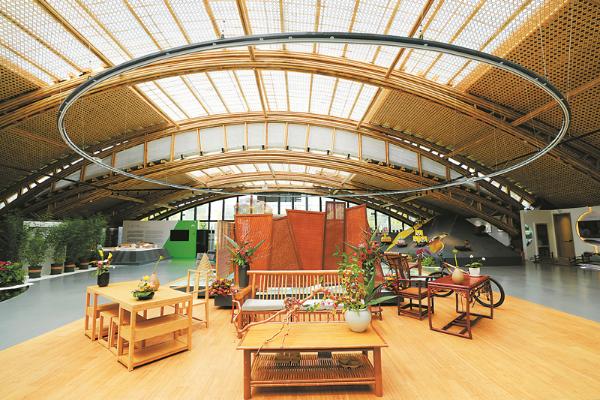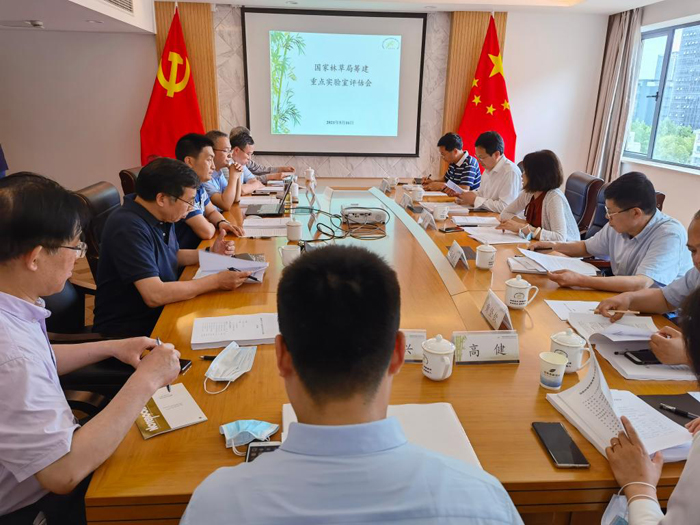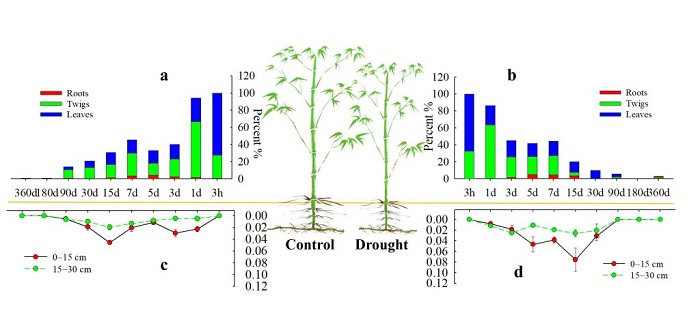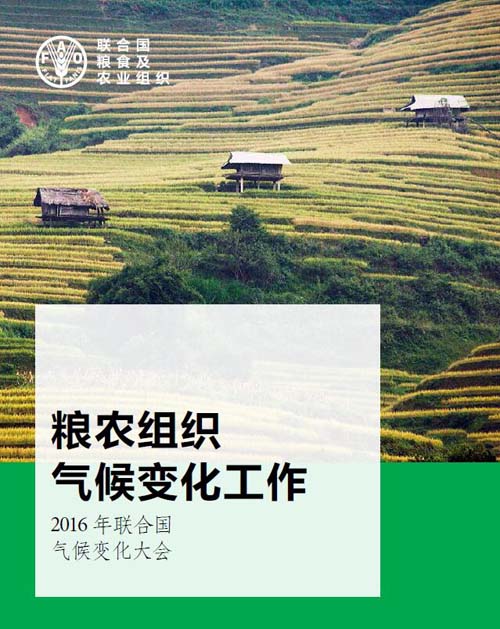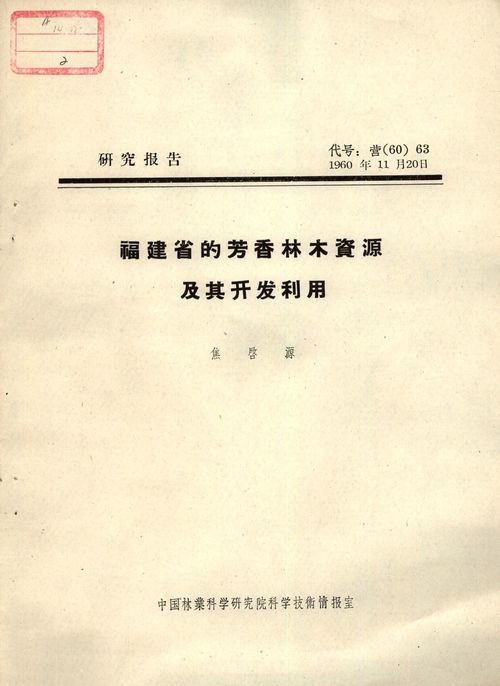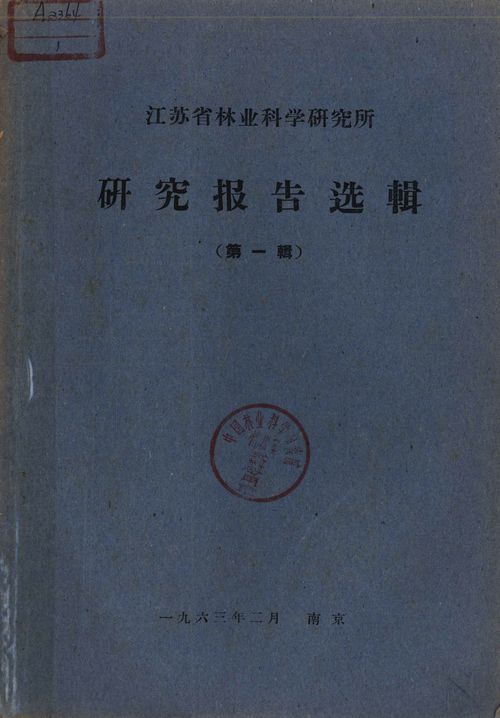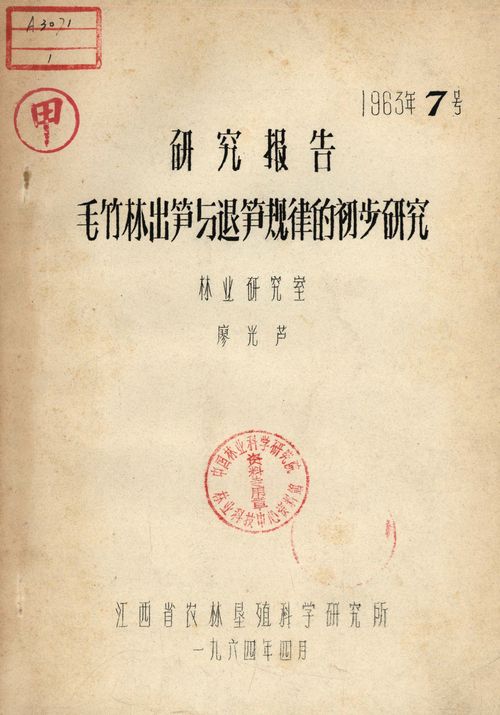
江苏省宜兴市毛竹资源利用历史变迁及现状
编号
lyqk010095


中文标题
江苏省宜兴市毛竹资源利用历史变迁及现状


作者单位
哈尔滨工业大学(深圳)经济管理学院 广东深圳 518055


期刊名称
世界竹藤通讯


年份
2023


卷号
21


期号
1


栏目名称
学术园地


中文摘要
毛竹是森林资源的重要组成部分,研究毛竹资源利用及竹产业可持续发展极具现实意义。文章基于历史文献调查和对江苏省宜兴市竹材加工企业的问卷调查,分析了1916—2021年宜兴地区毛竹资源利用的历史变迁及发展现状。结果表明,宜兴市竹材加工业在20世纪60年代通过引进国外先进生产技术而得以迅速发展,在竹制品种类、加工方式等方面发生了明显变化。现阶段竹材加工企业以年轻中小企业为主,研发能力弱,竹制品同质性明显且附加价值低,主要盈利模式为薄利多销。文章建议,建立区域竹材储备体系以确保竹原材料稳定供给,竹产业与旅游业结合发展提高竹制品附加价值,同时积极响应“以竹代塑”倡议开发新产品,为推进宜兴竹产业可持续性发展提供新机遇。


英文标题
Historical Changes and Current Status of Bamboo Resource Utilization in Yixing City, Jiangsu Province


作者英文名
Sun Pengcheng, Wang Dong


单位英文名
School of Economics and Management, Harbin Institute of Technology, Shenzhen 518055, Guangdong, China


英文摘要
Moso bamboo is an important part of forest resources, and it is of great practical significance to study the utilization of bamboo resources and the sustainable development of bamboo industry. Based on the literature review and the questionnaire survey among bamboo processing enterprises in Yixing City, Jiangsu Province, this paper analyzes the historical changes and current status of moso bamboo resource utilization from 1916 to 2021. The results show that local bamboo processing industry developed rapidly in the 1960s by introducing advanced production technology from abroad, resulting in obvious changes in bamboo products and processing methods. Currently, the bamboo processing industry is dominated by small-scale young enterprises, which are weak in research and development capacity, and thus they maintain the operation mode of small profit but quick turnover with their obviously homogenous bamboo products and low added value. It is suggested that a regional bamboo timber reserve system should be established to ensure the stable supply of bamboo raw materials, the bamboo industry should be combined with ecotourism to improve the value addition of bamboo products, and more efforts should be taken to actively respond to the initiative of “Bamboo as A Substitute for Plastic” for new products development. The study would provide new opportunities to promote the sustainable development of regional bamboo industry in Yixing City.


英文关键词
moso bamboo;resources utilization;historical change;sustainable development;Yixing City;Jiangsu Province


起始页码
46


截止页码
54


作者简介
孙鹏程(1990-),男,农学博士,主要研究方向为森林、土地及海洋等自然资源的管理利用。E-mail:451470671@qq.com。


通讯作者介绍
王东(1967-),男,教授,博士研究生导师,经济学博士,主要从事低碳经济与政策研究。E-mail:clayton_wang@163.com


E-mail
clayton_wang@163.com


DOI
10.12168/sjzttx.2023.01.008


参考文献
[1] 国家林业和草原局.中国森林资源报告[M].北京:中国林业出版社, 2019.
[2] 江泽慧.世界竹藤[M].辽宁:辽宁科技出版, 2002.
[3] 杨开良.我国竹产业发展现状与对策[J].经济林研究, 2012, 30(2):140-143.
[4] FLYNN A, CHAN K W, ZHU Z H, et al. Sustainability, space and supply chains:the role of bamboo in Anji County[J]. Journal of Rural Studies, 2017, 49:128-139. DOI:10.1016/j.jrurstud.2016.11.012.
[5] 王海霞.江西竹产业发展现状与对策[J].世界竹藤通讯, 2016, 14(2):43-46.
[6] 李智勇,王登举,樊宝敏.中国竹产业发展现状及其政策分析[J].北京林业大学学报(社会科学版), 2005, 4(4):50-54.
[7] 李岚,朱霖,朱平.中国竹资源及竹产业发展现状分析[J].南方农业, 2007, 11(1):6-9.
[8] 吴平.中国发展竹产业的优势、问题与对策[J].世界竹藤通讯, 2010, 8(6):29-31.
[9] 张国良,陈倩男,叶雯.基于生态文明的竹产业集群区域品牌建设发展路径研究[J].科学管理研究, 2017, 35(6):65-69.
[10] 董敦义.安吉竹产业逆境中谋发展[J].浙江林业, 2009(3):26-27.
[11] SHIYUUICHI K. Report on visit to a Chinese bamboo plywood factory[J]. Wood Industry, 1994, 49(2):90-92.
[12] KATORI E, IWAI Y. The structure of bamboo industry in Kagoshima Prefecture:the study of bamboo production,distribution and processing[J]. Kyoto University Research Information Repository, 1994, 66:76-91.
[13] SUN P C, SHIBATA S, NUKINA R. The bamboo resource using status in Kagoshima Prefecture:through questionnaire survey on local bamboo enterprise[J]. Journal of the Japanese Forest Society, 2019, 101(6):257-265.
[14] 张刚.宜兴建材竹产业刮起市场旋风[J].中国建材, 2002(10):67-68.
[15] 姜小雨,范少辉,尹子旭,等.基于敏感度:主观偏好矩阵的宜兴竹海视觉景观关键区识别[J].竹子学报, 2020, 39(3):78-90.
[16] 刘少才.华东第一竹海:宜兴竹海[J].南方农业, 2018, 12(10):1-4.
[17] 彭敏,杨效忠,朱瑞琪.竹海旅游产品开发的体验模型构建:以宜兴竹海景区为例[J].云南地理环境研究, 2011, 23(6):22-26.
[18] 江苏省地方志编纂委員会.江苏省志:林业志[M].北京:方志出版社, 2000.
[19] 湖父鎮志编委会.湖父镇志[M].北京:中央文献出版社, 1999.
[20] 太华镇志編委会.太华镇志[M].江苏:江苏古籍出版社, 2001.
[21] KIM D. Locational analysis ofSanuki Udon Shops in Takamatsu City[J]. Journal of Japan Institute of Tourism Research, 2015, 26(2):39-48.
[22] MEI L. A study of the location characteristic and generation forecast analysis in the convenience store[J]. AIJ Journal of Technology and Design, 2006, 24:345-348. DOI:10.3130/aijt.12.345.
[23] IWAI Y. Historical change and problems of bamboo and bamboo shoot production:a case study in Kagoshima Prefecture[J]. Applied Forest Science,2005, 14:1-8.
[24] IWAI Y.竹の経済史:西日本における竹産業の変遷[M].日本京都:思文阁出版社, 2008.
[25] 于文吉.中国高性能竹纤维复合材料的研发进展[J].木材工业, 2011, 25(1):6-8.
[26] SHIBATA S.Phyllostachys pubescens and Japanese[J]. Journal of the Japanese Society of Revegetation Technology, 2003, 28(3):406-411.
[27] 卢义山,徐宜良,李圣厚.江苏毛竹林生产力类型区的划分及分析[J].江苏林业科技, 1992(3):1-5.
[28] 窦营,余学军.世界竹产业的发展与比较[J].世界农业, 2008, 351(7):18-21.
[29] 童明龙,程琳.江苏宜兴竹地板产业发展探讨[J].世界竹藤通讯,2009, 7(2):38-40.
[30] 吴志勇,王云珠.安吉竹业发展现状与思路[J].竹子研究汇刊, 2000, 19(4):76-79.
[31] 董敦义,朱臻,黄敏.林业企业应对金融危机的成长策略分析:以安吉县竹材加工业为例[J].林业经济问题, 2009, 29(4):372-376.
[32] 杭竹,许元栋.宜兴地板的独家经营模式[J].中国检验检疫, 2013(3):47-48.
[33] 王戈,费本华,方长华,等.落实以竹代塑倡议助力竹业提速增效[J].世界竹藤通讯, 2022, 20(4):1-4.


PDF全文
浏览全文


-
相关记录
更多
- 龙脑型阴香资源利用现状研究进展 2023
- 振兴遂昌竹产业经济的发展战略 2022
- 日本森林疗养资源利用与产品开发 2022
- 林业绿色金融国际实践及启示 2021
- 毛竹林大小年形成机制及调控措施研究进展 2021
- 竹复合材料在建筑中的应用 2024
 打印
打印
